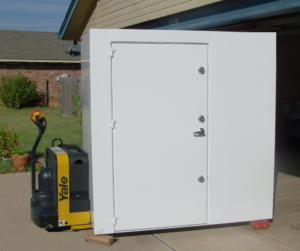Thunderstorms are an awe-inspiring display of nature’s power. The rumbling thunder, dazzling lightning, and torrential downpours make for a dramatic and sometimes dangerous spectacle. Being caught unprepared in a thunderstorm can be a nerve-wracking experience, but with the right knowledge, you can confidently navigate these storms.
Let’s unveil the secrets of thunderstorm preparation to equip you with the tools to stay safe and secure during these powerful weather events.
Stay Informed about the Weather
Regularly check the local weather forecast or use a reliable weather app to stay updated on any approaching storms. The earlier you are aware of an impending thunderstorm, the more time you’ll have to prepare. Additionally, pay attention to thunderstorm watches and warnings issued by local authorities, and take them seriously.
Create an Emergency Preparedness Kit
This kit should include essential items such as a torch with extra batteries, a portable weather radio, a first aid kit, non-perishable food, and drinking water. Keeping these items handy will ensure that you’re equipped to handle any unforeseen circumstances during a thunderstorm.
Secure your Surroundings
Outdoor furniture, potted plants, and other loose objects can become dangerous projectiles in high winds. Bring them indoors or secure them in a safe place to prevent damage or injury. Trim tree branches that could fall on your property or disrupt power lines during the storm. Add storm shutters to windows and doors to protect against strong winds and flying debris.
Prioritize Safety Indoors
Stay away from windows and avoid using electronic devices or corded phones, as lightning can travel through electrical wiring and phone lines. Unplug sensitive electronics to prevent damage from power surges. If your home is prone to flooding, move to higher ground or an upper floor if possible.
Seek Shelter Immediately
Avoid seeking shelter under trees or near tall objects that could attract lightning. Instead, find a sturdy building or a hard-topped vehicle. If you are unable to find shelter, crouch down low, with as little of your body touching the ground as possible, and avoid isolated objects.

Be Mindful of Post-Thunderstorm Hazards
Flooding, downed power lines, and debris are common dangers after a storm passes. Stay indoors until it is safe to venture outside. If you encounter a flooded area, do not attempt to walk or drive through it. It’s difficult to judge the depth and strength of the water, and it can be deceptively powerful.
The best way to stay safe during a storm is by seeking shelter in a storm shelter, also called a safe room. Safe Rooms US can design FEMA-approved, customized safe rooms for your house and ensure your family’s safety during extreme weather conditions. Contact us for a free quote!









